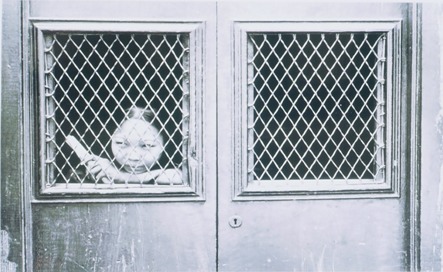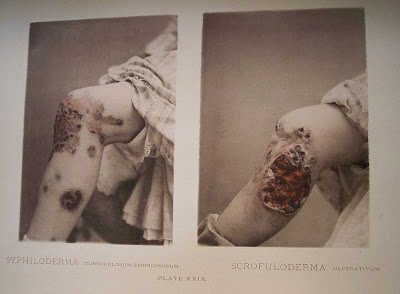Chinatown's Sex Slaves - Human Trafficking and San Francisco's History
Dan Bryan, February 17 2013
Prostitution was rampant in the old American West. With the exception of Oregon and Utah, the initial areas of settlement were overwhelmingly populated by young, single men, creating a market for vice. Some prostitutes parlayed their looks and business acumen into bona fide business empires.
On the other end of the spectrum, the sex trade has always had its brutal side. The most debased of its practitioners were those in San Francisco's Chinatown. Operating under a different set of mores, the prostitution there of Chinese women rested upon a foundation of human trafficking, organized crime, and outright slavery.
Immigrating to San Francisco
In the 1850s and for some time thereafter the Chinese who lived in San Francisco were not native to United States. Choice or circumstance had driven them from their homeland towards the promise of a richer life in California. Since China in the 19th century was racked by widespread famine and civil war (20 million died in the Taiping Rebellion between 1850-1864), nearly anything would have been an improvement. The high point for the Chinese men of this migration occurred from 1866-1871 with the building of the First Transcontinental Railroad. In other intervals the disdain and hostility of the whites confined them to the lowest of professions.
Men outnumbered women by a huge margin and it did not take long for Chinese gangs to exploit this situation. They set up brothels with Chinese women throughout Chinatown and anywhere else that Chinese men congregated. A sophisticated human trafficking ring got these women past the limited interference of American officials. They were largely kidnapped or tricked into leaving their homes (usually from the southern coast of China). In either case they had little choice in their profession, and they were treated more like animals than human beings.
Prostitution and the San Francisco Tongs
The first step for a Chinese woman arriving in San Francisco was an auction. Women could be sold for as much as $1,000 at these spectacles, and were then indebted to their new "employer" for an ill-defined period of servitude. In practice, they lived in the gray area between indenture and outright slavery. The hierarchy of these trafficked girls depended entirely on appearance. The most attractive were sold for the highest amounts, while the more plain-looking were cheaper. The ugliest women were sent to the worst places. They either lived in tiny cages which faced the alleyways of Chinatown or they were sent to the mining towns. To be sent to a mining town was considered the worst fate of all, due to the incredibly coarse nature of the clientele.
The human trafficking was controlled by Chinese gangs called tongs. One of the most ruthless and successful was the Hip Yee Tong which trafficked an estimated six thousand women between 1852 and 1873. Tongs not only imported the women, they usually pimped them as well.
The entire edifice of Chinese prostitution in San Francisco was underpinned by organized crime. Violence held the women in line. They were beaten and berated as a matter of course for the smallest infractions. Missionaries and religious ministers from the white community sometimes tried to free these women, but they were usually outdone by the threats of the tongs. Women who tried to flee further than San Francisco had little chance of success. Their Chinese features exposed them to virulent antipathy of California's white settlers and made them easy targets for the tongs' bounty hunters.
Where these activities came into conflict with the law, the tongs survived through the use of bribery. Public officials and police officers were often-enough compromised that for many years the practice went on with impunity1. After the era of Chinese exclusion began in 1882, the tongs simply forged papers and increased the size of their bribes. Some moral reformers, of course, were repelled by the traffic in human lives, but they were a minority in San Francisco until much later in that city's development.
1 - The only real concession to the law was the moving of the prostitute auctions from outdoor to indoor locations as the city grew.
Chinese Prostitutes and Syphilis
It was virtually assured that these women would catch syphilis or some other disease. While it has been largely eradicated in modern times, syphilis was endemic to America in the 1800s. Since a typical Chinese prostitute might have sex with ten or even twenty men in a single day, the sheer force of mathematics dictated their ultimate fate.
After a latency period of a few years, the symptoms of syphilis take a vengeful toll on the human body. Both the skin and the internal organs can be attacked by sores and nerve damage and mental performance deteriorates. When left to its course the disease produces an agonizing death.
The tongs had no use for aging women with diseases. In the best-case scenario they had overcrowded dwellings where the aging prostitutes were thrown without regard. Others simply became disfigured, decrepit beggars while they waited for the end of their days.
Other Chinese Women in America
A few Chinese women were lucky insofar as they avoided prostitution. They were usually the wives of the wealthiest Chinese in San Francisco. Living with bound feet, they would be allowed to go outside on special holidays, such as Chinese New Year. The rest of the time they were strictly kept indoors, as per Chinese custom.
Since it was also seen as a loss of status to have their wife seen walking on the street, even these rare visits were often conducted with a carriage. Thus, on a woman's one or two days of the year when she might venture outside, she would immediately go back into a vehicle as she traveled. It would certainly be no stretch to describe this as a stultifying existence. With rare exceptions2 it was the best fate that a Chinese woman in America could hope for until at least the early 1900s.
2 - Perhaps the most famous exception was Ah Toy, who arrived in 1849 (before the tongs) and supported herself in the trade. She lived to the age of 99 and became quite wealthy.
The Legal Debate on Prostitution
There have been debates on prostitution since it first became a profession. It has usually been illegal, at least in the United States. Many people look at the plight of women in the trade and support this. Churches and religious reformers have always been opposed, not just on biblical grounds, but out of genuine concern for the plight of the women involved. In San Francisco for example, Methodist or Presbyterian Christian women such as Donaldina Cameron led the crusade against prostitution when few dared to follow.
Others say that prostitution occurs between consenting adults and should be legal. Just as there is a religious streak in American life, there is also an individualist streak. However, many women in prostitution are not consenting, even now. The sex trade remains a huge driver of coerced human trafficking. Many are thrown into the trade as minors. Certainly in the San Francisco of the 1800s no more than a handful of Chinese prostitutes were practicing of their own volition.
Another stance on the trade is sometimes known as the "harm reduction" strategy. This is the point of view that supports a regulated, limited legalization of prostitution with clearly defined limits and frequent testing. This strategy was tried in San Francisco, from 1911 to 1915, when prostitution was permitted within a limited, "protected area" of the city. It was overturned by the efforts of San Francisco's churches who, for noble reasons perhaps, believed that prostitution should not be legal under any circumstances.
Into the modern day, prostitution remains illegal almost everywhere in the United States. It is still marred by the presence of underage girls, physical abuse, male domination, drug use, and rape.


